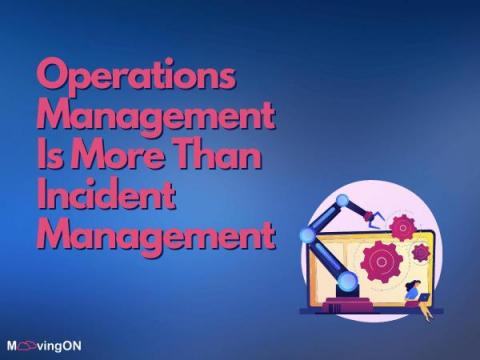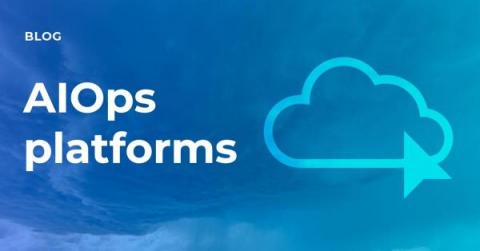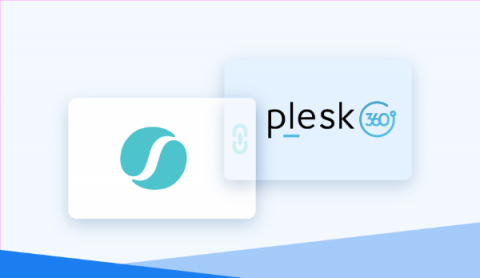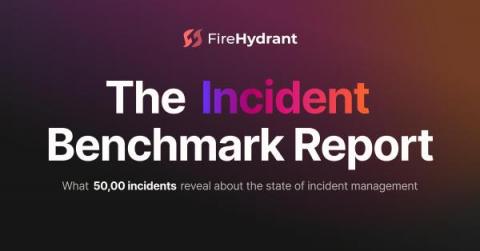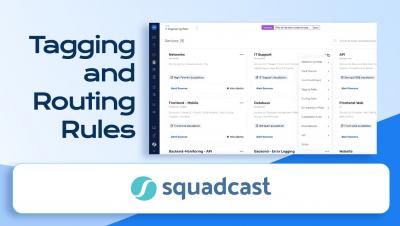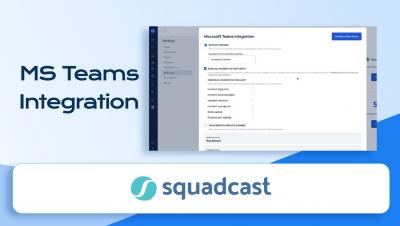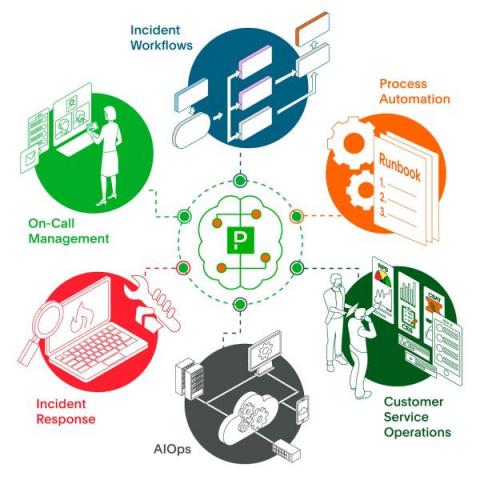Operations | Monitoring | ITSM | DevOps | Cloud
December 2022
PagerTree Team Management
PagerTree Alert Workflow
PagerTree OnCall Schedules
Looking back at our journey through 2022
PagerTree Quick Start - Getting Started
Critical System Alerts via SIGNL4
I recently had a call with a long-term customer who had been using Enterprise Alert for years without any major incidents. But in light of a recent proactive monitoring project, he also revisited Enterprise Alert and reached out to me to ask for my opinion on how he could improve the monitoring of Enterprise Alert from within the solution.
Squadcast + Hund Integration: A Simplified Approach for effective Alert Routing
Getting Amazon GuardDuty alerts via SNS Endpoint
Operations Management Is More Than Incident Management
To many, incident management and operations management may seem similar though they differ significantly. This difference, which lies in their end goals, also suggests that operations management is much more than incident management. To better understand why, it helps to look at the purpose of each one.
Season's Freezings: Automated Diagnostics with Jake Cohen
Incident Management for Digital Service Providers
Digital service providers (DSP) are valued for their ability to provide access to digital content on demand. A high-quality customer experience and instant access to digital services are the greatest expectations of consumers and vital aspects of successful DSPs. Therefore, it's crucial that incidents, when they occur, don't impact your operations. With a robust incident management strategy, DSPs can provide their teams with tools for automating, coordinating, and quickly resolving issues without-or with minimal-service interruptions.
Webinar: 2023 ITOps budgeting to win: use new research-based outage cost data
It’s no secret that the digital transformation essentially broke IT operations. With the rise in technology came a rise in outages capable of bringing organizations to a screeching halt. Those outages are expensive, and for years, the same number was thrown around as the authority on how much an outage cost (around $5,600 per minute). This number took off and was used in presentations, sales decks and other resources for years. But how could this number have stayed the same year over year?
Maximize efficiency with Terraformer: Manage Squadcast resources via IaC
Automation Seasons Freezings Wrap Up and New Year's Resolutions
It’s that time of year where you may feel pressured to pick your New Year’s resolutions. Well, we went ahead and tried to give you a head start. 2023 is the year we tame toil so we can focus on the fun stuff like engineering and innovation. Hopefully you have had the chance to follow along with us for the month of December for Seasons Freezings, the time of year you are locked out of production, so you have time to explore new ideas like automation 🙂.
You really like us: customer trust wins FireHydrant 3 G2 awards
FireHydrant received three G2 Winter 2023 awards — High Performer, a High Performer in the Enterprise category, and a High Performer in the United Kingdom. We are honored to be recognized by G2 because these awards are based on customer reviews.
Alarm optimization - what SIGNL4 has to offer
Having all relevant information pertaining to a critical incident is vital for quickly identifying the issue and prioritize its importance. SIGNL4 optimizes the perception, response and handling of incidents through customizable alerts with enriched parameters, images, sounds files, links to tickets or PDFs, as well as maps with geo-location information.
Best Practices for API Versioning
As your experience and knowledge of a system grow, change becomes inevitable. Your application requirements change, your bug fixes require code changes, and your APIs evolve. A key challenge in the software ecosystem is managing changes—especially when they concern APIs. Because you’re likely using APIs in multiple applications, you must document all updates and changes made to your APIs. This is where API versioning becomes crucial.
Why AIOps is the Connector Between Monitoring, Observability and Incident Management
Over the years, as companies have moved from monolith to cloud-native architectures, maintaining high availability has become more challenging. After all, today’s IT ecosystems are complex, distributed and ephemeral, making it increasingly difficult (and, in many cases, downright impossible) for DevOps practitioners and SREs to identify and fix issues manually.
Incident management vs. event management
Data Aggregation
TL;DR: Data aggregation is the process of collecting and organizing large sets of data from multiple sources in order to provide a comprehensive view of a particular situation or system. It allows organizations to better understand and make sense of the vast amount of data being generated in the modern, highly connected world.
Goodbye, 2022. Hello, 2023 - reflecting on a year of change, progress and incidents
Let’s get one thing out of the way: we’re going into 2023 on a high-note. We’ve closed deals with some of the most respected companies in both the UK and US, we’ve hired in the double-digits, expanded into New York, and revenue is growing steadily. But we aren’t hanging up our football boots just yet. Yes, we can take some time to celebrate our wins, but we’re all hands on deck for 2023 planning.
The Critical Role of Intrusion Prevention Systems in Network Security
An Intrusion Prevention System (IPS) is a network security and threat prevention tool. Its goal is to create a proactive approach to cybersecurity, making it possible to identify potential threats and respond quickly. IPS can inspect network traffic, detect malware and prevent exploits. IPS is used to identify malicious activity, log detected threats, report detected threats, and take precautions to prevent threats from harming users.
11 unique insights into SLOs and reliability management
What is AIOps: Prevent and resolve IT Outages
The definition of AIOps continues to evolve, but understanding the fundamentals of how it works can help you keep up and invest in the right AIOps platform, tools, and features. According to Gartner, AIOps “combines big data and machine learning to automate IT operations processes”. Specifically, Gartner explains that “AIOps platforms analyze telemetry and events, and identify meaningful patterns that provide insights to support proactive responses”.
Public Demo - How to respond to incidents faster with ilert
SRE Best Practices
Introduction to Kubernetes Imperative Commands
Tickets Make Operations Unnecessarily Miserable
IT Operations has always been difficult. There is always too much work to do—and not enough time to do it. The frequent interruptions and high levels of toil certainly don’t help. Moreover, there is relentless pressure from executives that question why everything takes too long, breaks too often, and costs too much. In search of improvement, we have repeatedly bet on new tools to improve our work.
Schedules | On-Call Rotations | Set up On-Call Schedules
Plesk 360 + Squadcast: Alert Routing Made Easy
Learn from 50,000 incidents with the first Incident Benchmark Report
Using anonymized data from 50,000 incidents, the Incident Benchmark Report reveals insights into the when, what, who, and how behind incidents and highlights behaviors that correlate to faster response times.
A New Era for Squadcast
Tagging & Routing at Squadcast | Incident Management | Squadcast
Escalation Policy I Round Robin & Advanced Escalations I Incident Assignment Strategies I Squadcast
Integrating Microsoft Teams & Squadcast - Acknowledge, Resolve & Reassign Incidents | Squadcast
Creating Routing Rules I Creating Incident Routing Flows I Alert Routing I Event Tags I Squadcast
Integrating Slack & Squadcast- Trigger, Acknowledge, Resolve & Reassign incidents from Slack channel
Alert Suppression Rules in Squadcast to prevent Alert fatigue | Squadcast
Using StatusPage at squadcast | SRE Best practices | Squadcast
APImetrics + Squadcast: Routing Alerts Made Easy
SRE Maturity Model: How Do You Assess Your Team?
"Just get on with it!" - The Horrors of Task Prioritization
Learn how to prioritize tasks, get stuff moving by performing non-blocker tasks first, effectively create postmortems, perform RCAs faster and not have an overburdened high priority(P0) dashboard. The below article should help you plan your product/feature launch faster without having to compromise on the reliability of the existing services.
Doing More with Less: Building Greater Operational Efficiency with PagerDuty
How many of us can say with confidence that we know a tool inside and out? If you’re like most, you probably use just a small fraction of a product’s features. When it comes to feature-rich software like Microsoft Word or Excel, it’s a safe bet that most users are aware of less than half of the features, and use even less on a regular basis. And the longer we’ve been using a piece of software, the more likely we fall into this trap of feature underutilization.
How to design an effective incident on-call program
Season's Freezings: Change Freezes with Rich Lafferty
What is an Incident Commander in ITSM?
Incident Commanders play a crucial role in the successful operation of IT service management (ITSM) teams. By applying best practices, they can ensure that incidents are handled quickly and efficiently, so that downtime for end users is kept to a minimum. This article provides an overview of the requirements for an effective Incident Commander in ITSM. It discusses the skills and competencies needed for effective incident management, and highlights some best practices for this role.
Kubernetes Lens: Improving Operational Awareness of Kubernetes Clusters
Kubernetes Lens is an integrated development environment (IDE) that allows users to connect and manage multiple Kubernetes clusters on Mac, Windows, and Linux platforms. It is an intuitive graphical interface that allows users to deploy and manage clusters directly from the console. It provides dashboards that display key metrics and insights into everything running on a cluster, including deployments, configurations, networking, storage, and access control.
A New Era for Squadcast
Using Squadcast's SLO Tracker | Error Budget | Setting up SLOs and configuring SLIs | Squadcast
Introduction to Service Catalog | Service Ownership | Service Classification | Squadcast
Squadcast Product Demo
The founder's story: a trip down memory lane - incident.fm
The founder's story: a trip down memory lane
In this podcast, the three incident.io co-founders Stephen, Chris and Pete take a trip down memory lane, revisiting the story of how they came to found incident.io and the major milestones of the first 12 months in business.
Recapping this year's AWS re:Invent 2022
Amazon recently concluded their five-day long conference, AWS re:Invent 2022. This year’s conference was hybrid with the company streaming a significant portion of their in-person conference for free. For ten years now, the event has seen attendees across the cloud continuum come together to learn, share and get inspired. This year was no different as we saw some of the biggest names in cloud computing make their presence felt at the conference in Las Vegas.
Taking incident management to the next level with an internal developer portal
Tag You're It: Organized, Configurable Tagging is a Must-do for Great Incident Analytics.
PagerDuty App for ServiceNow: Extend ITSM with Real-Time Digital Operations
AIOps for Managed Service Providers
Let's talk bugs versus incidents
In this post, we’ll dig into the difference between a bug and an incident, why alignment on how they are defined matters, and how to ensure you’re still learning from the issue, even if it’s “just a bug.”
Swimlane Frameworks and Diagrams for Structured Incident Resolution
Initiating An Incident - xMatters Support
Outages ITOps professionals are thankful to avoid
As we settle into the time of year when we reflect on what we're thankful for, we tend to focus on important basics such as health, family and friends. But on a professional level, IT operations (ITOps) practitioners are thankful to avoid disastrous outages that can cause confusion, frustration, lost revenue and damaged reputations. The very last thing ITOps, network operations center (NOC) or site reliability engineering (SRE) teams want while eating their turkey and enjoying time with family is to get paged about an outage. These can be extremely costly - $12,913 per minute, in fact, and up to $1.5 million per hour for larger organizations.
How to choose an incident management software
The ITIL definition of an incident is “an unplanned interruption to or a quality reduction of an IT service”. In your IT ecosystem, an incident may be caused due to a malfunctioning asset, or a network failure. Common incidents include issues with the printer, Wi-Fi connectivity, application locks, email service, laptop, file sharing, unresponsive servers, or even authentication errors.
Best practices for on-call scheduling and management
5 tips for a more modern and efficient on-call management
On-call management is one of the most important aspects of seamless IT service. Its aim is to ensure that the right person is notified in the case of an incident, so that they can react accordingly as quickly as possible. In certain cases, many people have to be notified. To achieve this as efficiently as possible, it is vital to have an up-to-date and smoothly functioning system.
ITIL and CI/CD
In the world of IT, there are two main approaches to managing changes—the information technology infrastructure library (ITIL) and continuous integration and continuous delivery/deployment (CI/CD). Both have their own benefits and drawbacks, so it’s important to understand the difference between them before deciding which one is right for your organization. In this article, learn about the difference between CI/CD and ITIL, and find out which approach is best for your needs.
Toil: Still Plaguing Engineering Teams
Our industry has always had localized expressions for work that was necessary but didn’t move the company forward. The SRE movement calls this type of work “toil.” The concept of toil is a unifying force because it provides an impartial framework for identifying — then containing — the work that takes up our time, blocks people from fulfilling their engineering potential, and doesn’t move the company forward.











